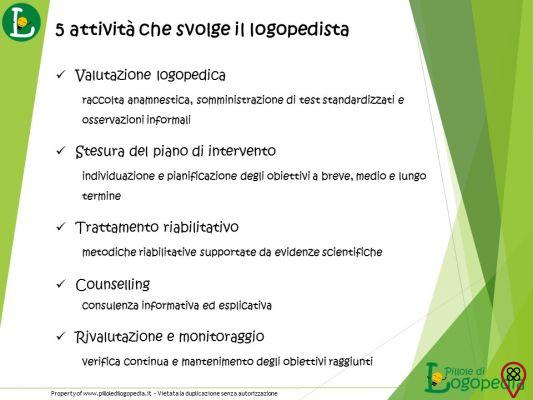Vertical transmission is a subject that pregnant women must master. This is because it is characterized by the passing of an infection or disease from the mother to the baby during pregnancy, delivery or breastfeeding.
That is, if the pregnant woman has a certain disease or infection, it is possible that the baby is also contaminated through vertical transmission. Learn more about the diseases that are transmitted this way and learn about ways to avoid them below.
What are the main diseases that can be transmitted this way?
Not all diseases of the pregnant woman are transmitted to the baby she is bearing or breastfeeding. But the most common diseases that are subject to vertical transmission deserve attention. Check out:
1) Rubella
Rubella is an infection caused by a virus that can be transmitted from mother to baby if a pregnant woman contracts the disease in the first trimester of pregnancy, through contact with an infected person. From this, a premature birth may occur, the baby may have deafness, heart and eye problems. Fortunately, there is a rubella vaccine, which protects the mother from the virus.
2) Toxoplasmosis
Toxoplasmosis is caused by a protozoan that lodges in cat feces. So, if a pregnant woman ingests the contaminated feces of these felines (which may have contaminated fruits, vegetables, meats, milk and eggs), the baby has a 4% chance of contracting the disease as well. In this case, he may have heart, brain, visual and liver problems. It is essential to sanitize food well before eating.
3) Lupus
Lupus is an inflammatory and autoimmune disease, whose positive autoantibodies can be transmitted from mother to baby through the placenta. If this occurs, the baby is at risk of having permanent changes in the heart and transient changes in the skin. Also, he can develop lupus when he grows up. That's why medical follow-up is essential.
4) HIV
HIV is the virus that causes AIDS and can be transmitted through unprotected sex or sharing sharps contaminated with the blood of someone who is HIV positive. If the pregnant woman has the virus, there is a 25% chance that the baby will be infected during pregnancy. However, if she does medical follow-up and takes the necessary medicines, the chance decreases to 1%. In breastfeeding, it is also important to continue medical follow-up.
5) HPV
HPV is a virus. In this case, contagion occurs through unprotected sexual contact, with or without penetration. However, the virus can also be transmitted from the pregnant woman to the baby during pregnancy and at the time of delivery. If there is contamination, the fetus may have problems with the kidneys, abdominal walls and cleft lip. In addition, the virus can cause premature birth. However, it is possible to get vaccinated against HPV and carry out medical follow-up to avoid these problems.
6) Syphilis
Syphilis is an infection caused by a bacteria transmitted through sex. However, contagion can also occur by vertical transmission. In this situation, the chance of the fetus dying in the uterus is 40%. In addition, he may be born with deafness, hydrocephalus, or tooth and bone abnormalities. Despite this, the disease can be treated in early pregnancy, with medical supervision.
7) Hepatitis B
Hepatitis B is a disease caused by a virus spread through contact with the blood and secretions of an infected person. There is a 50% risk that the fetus will contract the disease during pregnancy. However, vertical transmission can also occur at the time of delivery. Even the risks of a premature birth are higher. Keeping the vaccination up to date, the pregnant woman can avoid contagion of the disease.
8) Herpes genital
Genital herpes is caused by a virus and is transmitted through sexual contact with an infected person, with or without penetration. By vertical transmission, the disease affects 1 in 3000 newborns. When treated at the beginning of contamination, the disease is restricted to problems in the skin, mouth and eyes. However, the condition can get worse, compromising muscles, brain, liver and blood. In some situations, it can make breathing difficult and cause the baby to die.

Vertical and horizontal transmission: what's the difference?
As we saw earlier, vertical transmission occurs from the pregnant/lactating woman to the baby, and in many cases it can have serious consequences for the child. But vertical transmission is not the only one that exists.
Horizontal transmission is another way of transmitting diseases. It occurs when a disease is transmitted from one person to another or from an animal to a person. In the case of vertical transmission, the contagion can only occur from the pregnant/lactating woman to the fetus/baby.
So, when we think of diseases that can strike a child while he is being born, we necessarily talk about vertical transmission. But is there a way to avoid this? Learn more in the next topic.
Is it possible to prevent vertical transmission?
Vertical transmission can bring many problems for the pregnant woman and the baby. That's why it's essential to understand the main ways to avoid it. See what they are:
1) Keep vaccinations up to date
Many of the diseases that can reach the fetus through vertical transmission are prevented by vaccination. Therefore, it is extremely important that the pregnant woman is up to date with vaccines, preventing diseases from developing in her body.
2) Perform prenatal exams
Through prenatal exams, it is possible to diagnose diseases that would be transmitted from the pregnant woman to the fetus. From there, they can be treated properly, and health professionals will know how to mitigate the negative effects they could have on the baby.
3) Inform yourself about diseases
The more a pregnant woman knows about the diseases that can harm the fetus she is carrying, the more she will know about how to protect herself from these diseases, in addition to being able to talk about them with the health professional who is accompanying her.
4) Prioritize medical follow-up
Finally, medical follow-up should occur during and after pregnancy. In this way, the pregnant woman can find out what is happening inside her body, what measures she should take to have a safe and healthy pregnancy and how to protect herself from numerous diseases.
You might also like:
- Enjoy the diet of vegetarian pregnant women
- Discover the best crystals for pregnant women and babies
- Analyze how the tranquility of the pregnant woman influences childbirth
From the content presented, we observed that the vertical transmission of diseases between pregnant women and babies can bring serious risks. However, there are ways to avoid it, especially with professional medical follow-up. Take care of yourself!

























